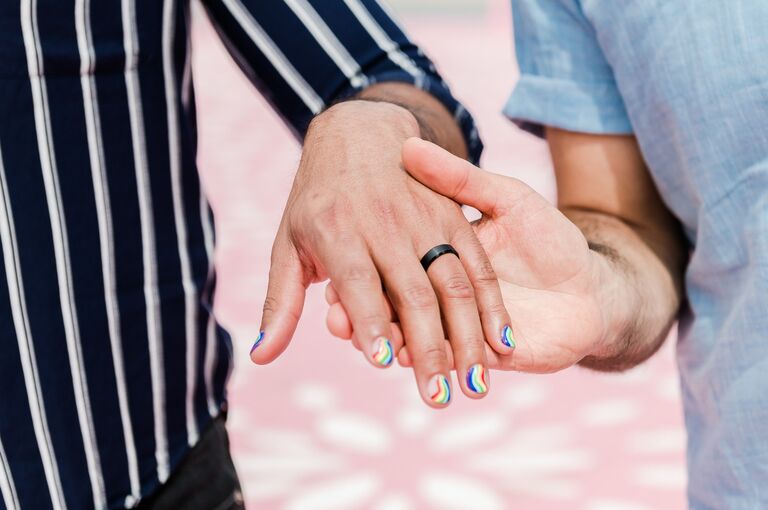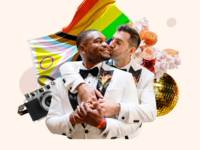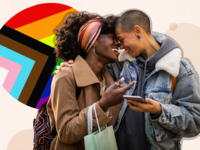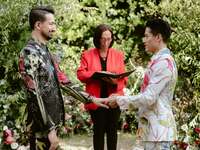Who Asks in an LGBTQIA+ Proposal? Your Engagement Questions, Answered
While the LGBTQIA+ community is honored during the month of June with Pride celebrations—the right to be loved and give love remains an ongoing important movement. If you identify as part of this group or you want to be a supportive ally to your friends, you may have questions regarding the proposal process. Like, who asks in a LGBTQIA+ proposal? Do both partners receive rings? Like with any relationship, there is no one-size-fits all answer to these questions. Each couple makes their own rules, based on preference, comfort level and many other factors. What matters the most is that each partner feels safe and confident to express their needs—and their hopes for an engagement and marriage.
That said, we asked LGBTQIA+ wedding vendors and experts to provide a general guideline on LGBTQIA+ proposals and customs.
Who Pops The Question In An LGBTQIA+ Proposal?
For many years, LGBTQIA+ couples couldn't outwardly express and share their love or relationship. Instead, only male and female pairs were socially acceptable, with the man traditionally tasked with popping the question. Thankfully, men can propose to other men, women to other women, non-binary folks to their partners and vice versa. And sometimes, they can propose right back to one another. There is no hard-fast rule on who asks.
What's a Double Proposal?
Originating in the LGBTQIA+ community and seen most often in same-sex relationships, a double proposal is exactly what it sounds like, where each partner can propose to the other, explains Ian Ramirez, the co-owner of Madera Estates. "Moving beyond gender roles and stereotypes, a double proposal creates a new tradition built on the foundation of love and equality within a relationship," he says. "Whether on the same day or on different days, this allows each partner to enjoy both sides of the experience. Why only have one proposal when you can have two?!"
Is a double proposal common? Some experts say yes, while others are on the fence, but Thomas Walters, the owner and event planner at The Renaissance says this gesture is currently on the rise. "If one person in the couple surprises the other with a marriage proposal, that person might be 100% comfortable with the understanding that accepting the proposal professes their love equally, so they don't feel the need to have a double proposal," he says. "But if one person in a couple is proposed to—and accepts—and they feel inspired to create a unique marriage proposal of their own, they should do it."
Should both partners propose?
There is no 'should' in a relationship—and when it comes to a double proposal, it's not a requirement for both people to ask the question. However, it could be an appreciated testament of love and worth a conversation with your partner. Rather than calling it a double proposal, Mary Angelini, the founder of Key Moment Films calls it a 'rebound proposal'.
It's common for one person to propose with a ring, and in the middle of the proposal or shortly after (within minutes), the other person brings out a ring to counter-propose, she says. "Queer relationships are focused on equality, and it's important to many couples to propose to one another to signify to one another they are equally in the relationship."
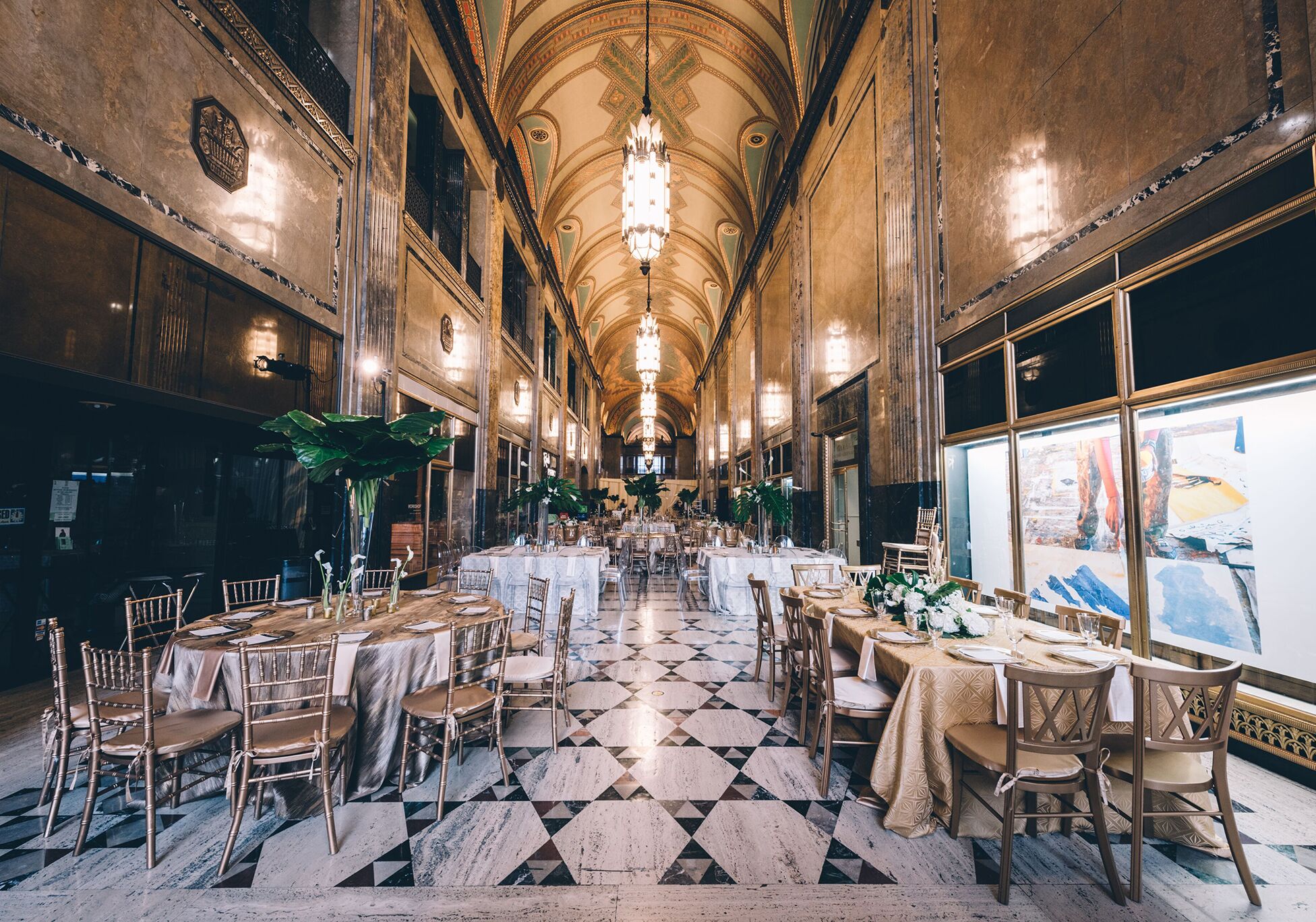

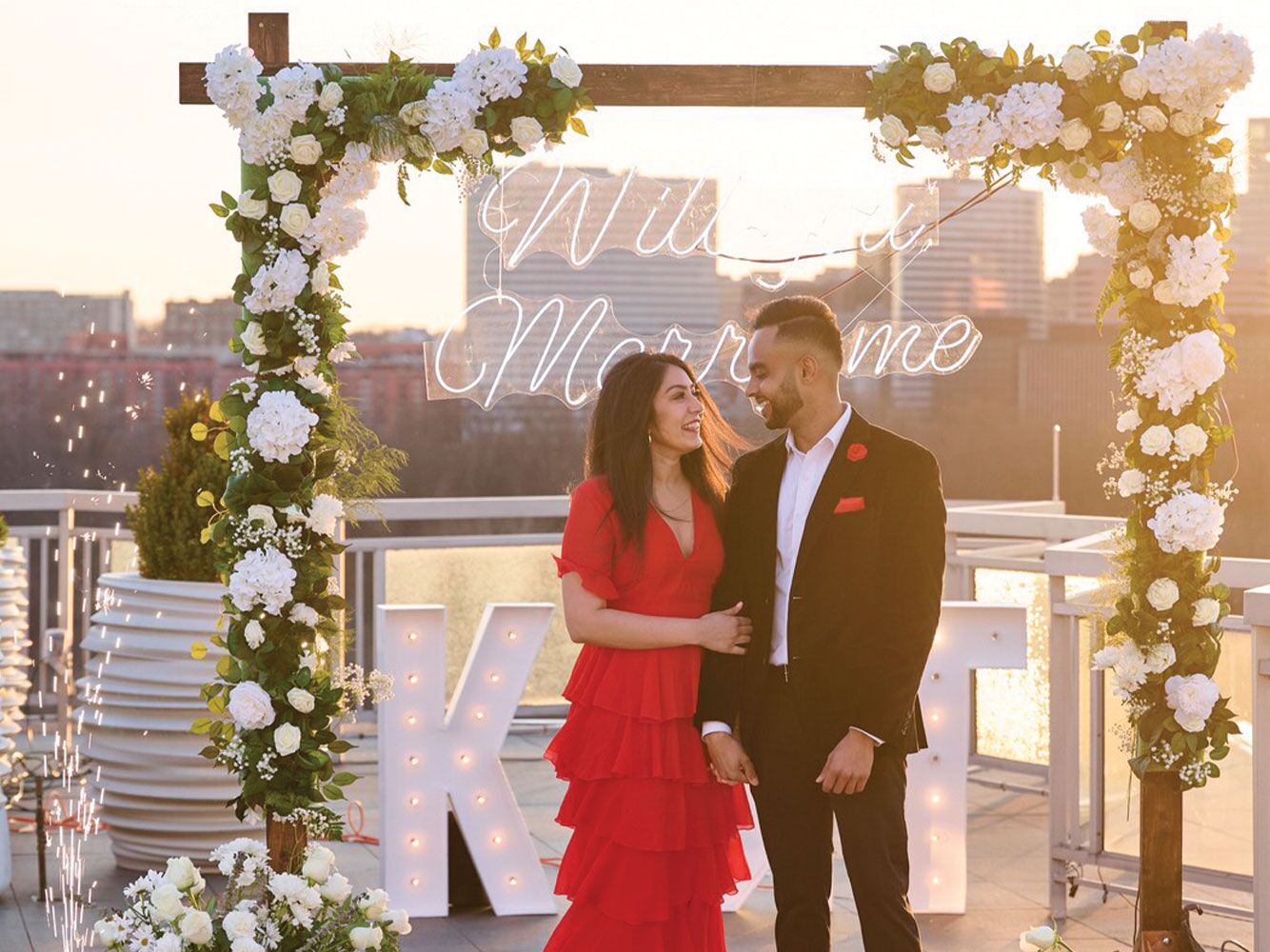
As an example, Angelini shared that one of her dearest friends held onto her keychain no matter where she went because she had a ring hidden and wanted to rebound-propose as soon as her partner proposed. Also, Angelini's wife proposed to her at a holiday party, and then they later decided that Angelini would propose as well. "I proposed to her on a hike in the Carolinas while we were enjoying the views from a lookout point," they shared.
What About The Rings?
In a traditional heterosexual relationship where a man proposes to the woman, he usually offers her an engagement ring. She wears this until their wedding day, where they both receive bands. Throughout the engagement process, a man doesn't usually wear an engagement ring. In the LGBTQIA+ community, there isn't a set way to use rings. Instead, it's up to the couple and what they decide together.
Do you need to propose with a ring?
Absolutely not. As Angelini puts it: "Queer folks do not need to follow traditions; the proposal is no different. We can propose with or without a ring. Usually, if it's without a ring, rings are still purchased at a later day."
Wedding planner Keith Willard echoes Angelini, saying rings aren't necessary at all—but you do need something, since it shows thought and planning. And it can be as simple as a grape soda cap. "If the couple's first movie date was to the Pixar movie Up. In the movie, the grandpa has a memory of his first date when they shared a grape soda," he adds.
Do both partners get an engagement ring?
It's becoming more common in heterosexual relationships for both partners to wear engagement rings. And in the LGBTQIA+ community, it depends on what each person wants. "If one or both persons does not wish to have (or wear) an engagement ring, they are still considered engaged," Angelini says. "They do not need to exchange engagement rings to formalize their engagement."
Do you have to get matching engagement rings?
Just like any other relationship, matching rings is completely up to the couple and their styles. "Some couples find the significance of matching important, while others have different tastes and lifestyles, requiring different types of rings," Angelini says. As an example, Angelini's wife proposed with a traditional diamond engagement ring and and they proposed with a Tiffany & Co. band "Both rings were chosen based on our style preferences and what type of jewelry we like to wear," they add.
Willard and his partner had the same material of rings but in different styles. And they change the band every five years. The first bands were gold and tiger eye, with Willard's more geometric and his partner's more rounded. This year, Willard finally got his diamonds! "Many of my LGBTQIA+ couples will find engagement rings together with the same idea. Similar but not the same. Just like the couple, we are different individuals, but we are in love with each other," he continues. "Same materials but different styles."
